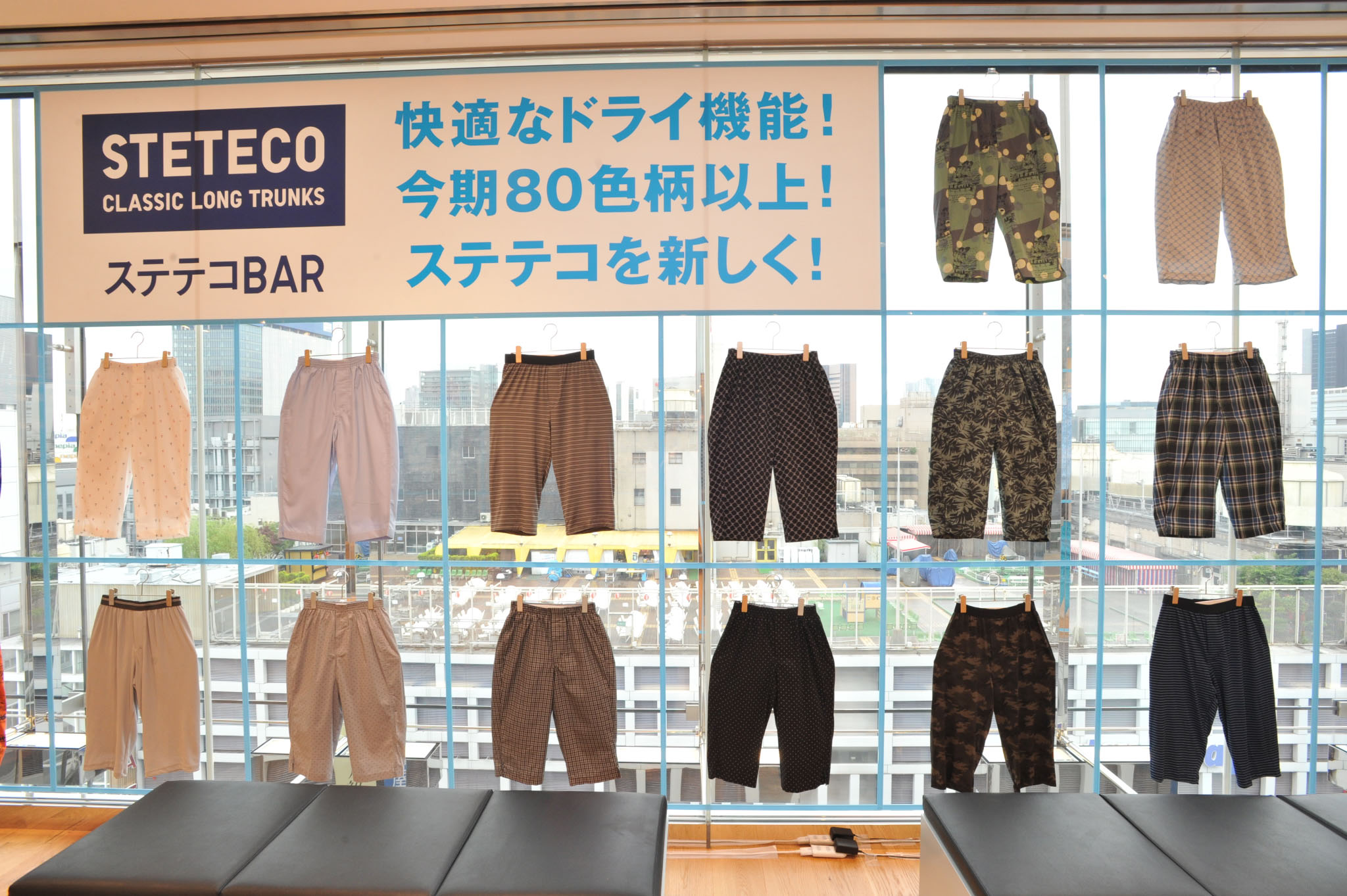Picture this: A man comes home from work on a summer evening. The intense heat of the day has abated and he goes into another room to change out of his suit. He emerges wearing a simple ensemble of underwear consisting of an undershirt (sleeveless or not) and a pair of suteteko — which can best be described as a loose, thin, crepe cotton version of long johns. Suteteko are roomy around the waist for comfort but taper in slightly from the thighs and extend to a few centimeters below the knee.
The man sits down, maybe in front of the dining room table but more likely cross-legged in front of the TV and calls out to his wife to bring him a bottle of beer. If he's lucky she'll have some boiled edamame beans ready too. He picks up an uchiwa (fan made from thin strips of wood and paper) and relaxes. There you have it — the stereotype of a Japanese man at his most content.
That image of a man lounging around in his underpants — as undesirable as it may sound — is as familiar to the Japanese as summertime itself. He could be a father, an older uncle, a friendly neighbor or an elderly grandfather. So what if the classic suteteko-clad man is only seen in TV dramas and movies these days? Suteteko, are embedded in the collective subconscious of the Japanese, and they are part of our vision of how summertime should be.



















With your current subscription plan you can comment on stories. However, before writing your first comment, please create a display name in the Profile section of your subscriber account page.